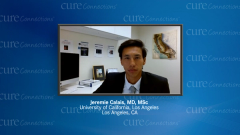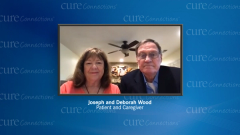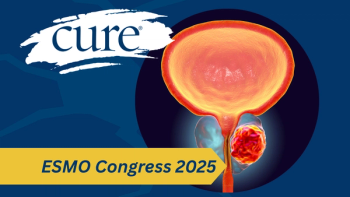
A Multi-Disciplinary Approach to Treatment for Patients with mCRPC
Drs Matthew Rettig and Jeremie Calais explain what it means to be a part of a collaborative team and how communication plays a big role in patients receiving optimal treatment.
Episodes in this series

Alicia Morgans, MD: I’d love to hear too, other than “my PSA [prostate-specific antigen] is going up,” patients will have other concerns about getting radioligand therapy. From your perspective, Matt, are there any myths that you want to get out there? Is there anything you’d like to put out on the table and speak to and hope to dispel?
Matthew B. Rettig, MD: Yes, I think that’s really important because radiation can carry with it this myth of being this horrible thing, and you’re going to grow an extra arm, or you’re going to get cancers because of the radiation. And really what we’re talking about is therapeutic doses. Long-term complications of this are not really a concern, especially in the near term when we’re treating advanced prostate cancer. Very rarely, and over many years, sometimes there is a small increase in the risk of some cancers. But really, it’s negligible, especially when compared to the importance of gaining a therapeutic effect from radiation. Whether it’s the very low doses with scanning, some diagnostics, or the slightly higher doses, we’re still talking about therapeutic [dosing]. I do want to dispel the myth that getting radiation is going to cause some terrible things for you or your family members or friends; that’s important to understand.
It’s an important take-home message, and it [the radiation] is well tolerated. I think we’ve talked about that. It’s an important message, that these treatments are effective and well tolerated. Treatment does not have to be associated with a lot of side effects to be effective. I hear patients asking me, “Do I really want to take an aggressive treatment?” Meaning, that it’s going to cause side effects in order to get a treatment effect and response, and that’s just not the case. In fact, I think some of the most effective treatments are the ones that are more selective, and more specific, where we have a specific molecular target. As Jeremie talked about, PSMA [prostate-specific membrane antigen] is a molecular target. When we have such specific therapies, the side effect profile tends to be very favorable, because the target is specific to the cancer. So, I think that’s also an important concept to recognize in PSMA therapy and diagnostics.
Alicia Morgans, MD: That’s a great message. The better you are at targeting the cancer, the more on-target wanted effects you have against the cancer, and the fewer off-target side effects you’ll have. That’s a great point and so important for people to hear. Now, we have heard through the course of this discussion about how wonderfully you and Jeremie work together. I want to ask you first, and then I’ll ask Jeremie, what are some of the ways that you make it work? Nuts and bolts, day to day, how do you make it work because you’re both extremely busy? You’re both doing many jobs as academicians, some of those are clinical, but then you have other responsibilities. Jeremie’s reading scans, you’re seeing patients maybe with other cancers, how do you get together to actually make multidisciplinary care for radioligand therapy work?
Matthew B. Rettig, MD: I think, first of all, it’s premised on having a friendly relationship. We like each other and we communicate. And ultimately, although we wear a lot of different hats, the most important thing is the patient. The patient comes first. When there’s an issue, whether it’s research or administration, or a clinical issue, the patient comes first. Communication comes in a lot of different forms. We have formal venues for discussing cases, like multidisciplinary tumor boards, where we bring up difficult or interesting cases. We communicate all the time, whether it’s by phone, or by email, we’re constantly in touch. We’re in touch about clinical trials, and we’re in touch about specific patients, so there’s an ongoing dialogue. We’re never caught off guard, and we know what the other is doing. It makes for a very productive and efficient way of treating patients. So it’s not that complicated, it’s communication, and doing it together and taking care of the patient as a team.
Alicia Morgans, MD: That’s a wonderful message. Jeremie, how do you make it work?
Jeremie Calais, MD, MSc: It’s always hard to come after Matt; he said everything. I want to highlight that it is the patient first. You have all your emails and your calls, and sometimes it can be related to research or administration, but what matters is when you have a colleague who says, “OK, I have this patient, I need to do this, tell me what you think.” That’s when you have to stop everything and make the patient your priority. For radionuclide therapy, when there is a side effect you’re not sure how to handle, you send a text message or email, and try to communicate with your colleagues. When my colleagues are telling me, “I have the patient in front of me, can you look at the scan quickly and tell me what you think,” I always try to make that my first priority. That’s a key priority. I think we’re lucky to have that. But we get along very well here at UCLA [University of California, Los Angeles] with all our colleagues, and with Matt in particular, so for us, it’s very pleasant.
Alicia Morgans, MD: I love to hear that.
Transcript edited for clarity.









